Theo Verelst Local Diary Page 65
I've ditched the usual header for the
moment, I think it doesn't help much anyhow.
This page is copyrighted by me, and may be read and transfered by any
means only as a whole and including the references to me. I
guess thats normal, the writer can chose that of course, maybe
I´ll make some creative commons stuff one day, of course I have
made Free and Open Source software and even hardware designs available!
This
page is under construction, so check back later, too.
Feb, 2009
More work still, Theo, isn't there ever an end to it? Donno, I guess
some things are still interesting in my opinion.
More waves on the Bwise canvas
This is a 2 times 10 sine/exponent block sound generator algorithm made
with bwise, maxima, my own sound program and some tcl helper routines.
The sineexp block contains a sine generator with frequency (f) and
modulation input (e, maybe I should take the derivative, but that would
be easy with maxima!) which is multitplied by a natural 'e' based
exponent with exponent -t*e and two amplitude modulation inputs
(a1, a2):
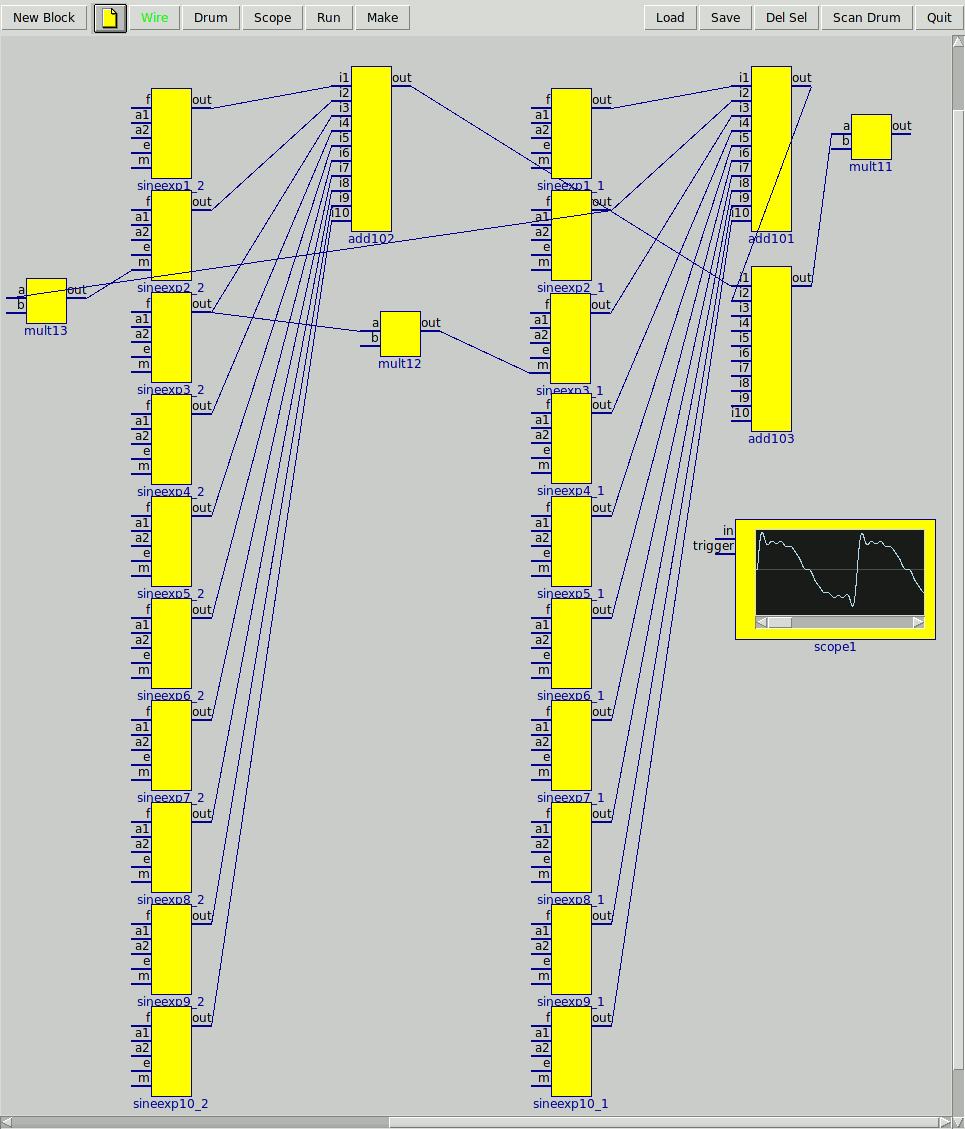
(download
loadable bwise canvas file, note the scope doesn't completely load, the
rest will work)
In this example the frequencies of the blocks are per column integer
harmonics with a slight , increasing detune for higher harmonics, for
both columns the other direction (up/down). The components in the one
column are made stronger for softly played notes, and also shorter, the
other column is heard when notes are played louder, and has longer
decay time.
Also the spectra are different, and there are two cross column FM
modulations between the first in the one and between the third in the
opposite direction. The resulting sound can be heared in a short
musical tryout here:
wav
24 bit mone wav example, 4MB
t.mp3 192 kbps
tl.mp3 48 kbps
The oscilogram in the small window above is accurate for the first 170
samples of notes played at 440 herz with velocity equal to 1/2 (64 in
midi code) and was generated by using maxima to compute 170 values
based in all non-floating point input! Similarly, the below larger
graph is 2000 samples computed and eventually converted to floating
point by executing in Bwise :
canvas .g.c
pack .g.c -expand y -fill both
time {set r [domaxima float(makelist(subst(y/44100,x,subst((1/4),v,${mult11.out})),y,0,2000))]}
.g.c create line 0 500 2000 500 -fill green
set o {} ; set n 0 ; foreach i [split [string range $r 1 end-1] ,] { append o "$n [expr 500-3000*$i] " ; incr n}
.g.c create line $o -fill red
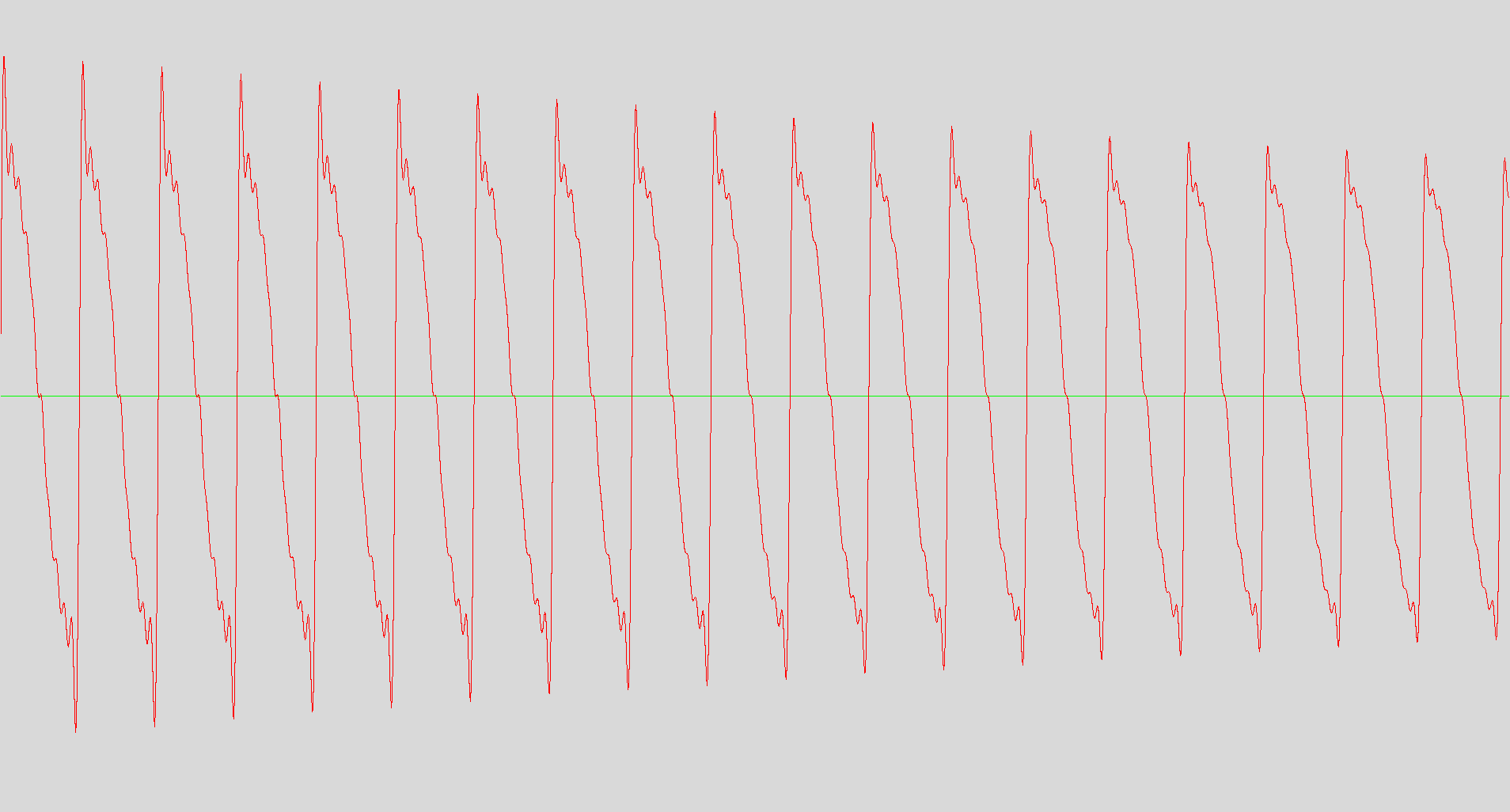
The Cuda Profiler on Fedora 10/64
I used the profiler of 2.1 on the 2.1 smokeparticle example:
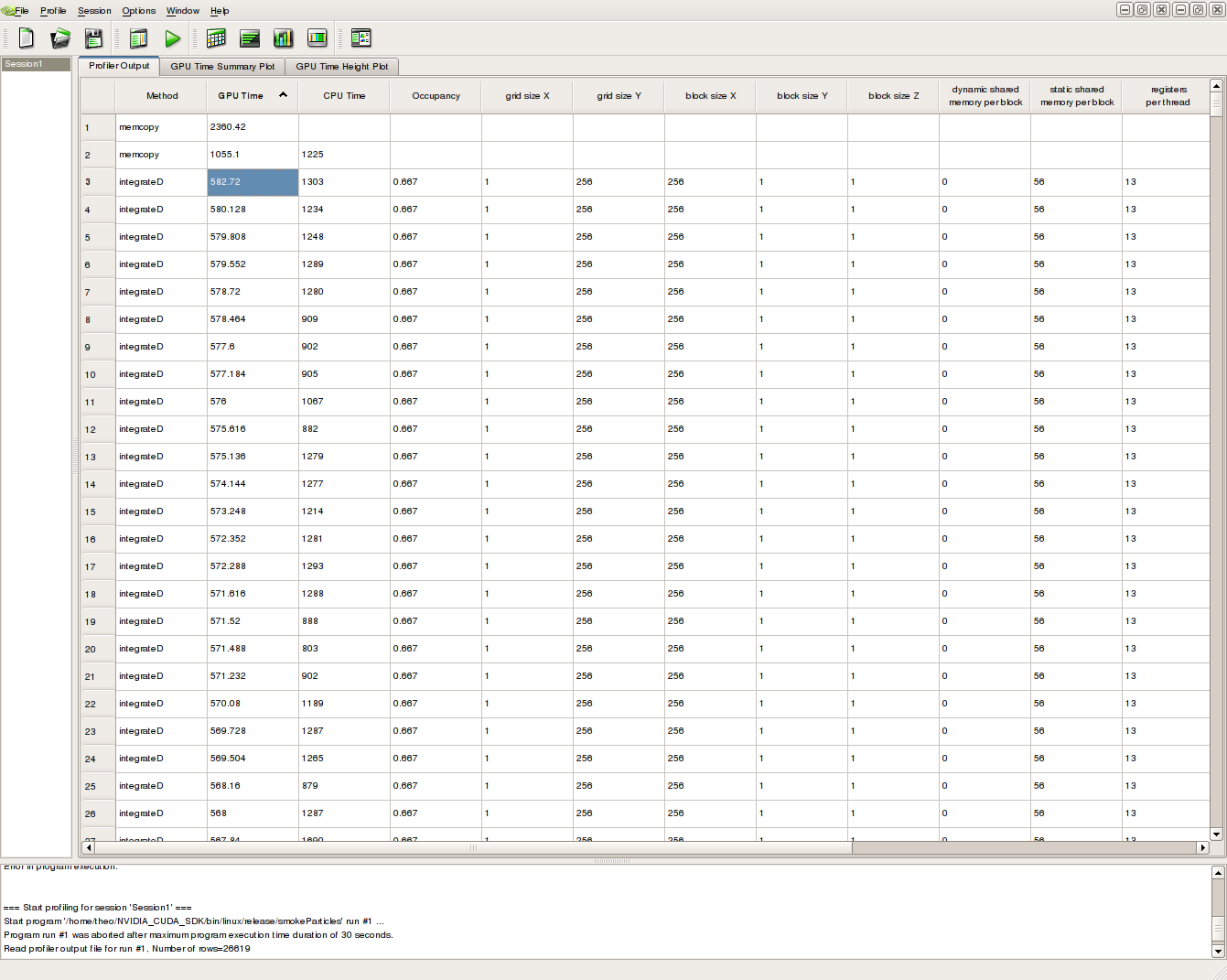
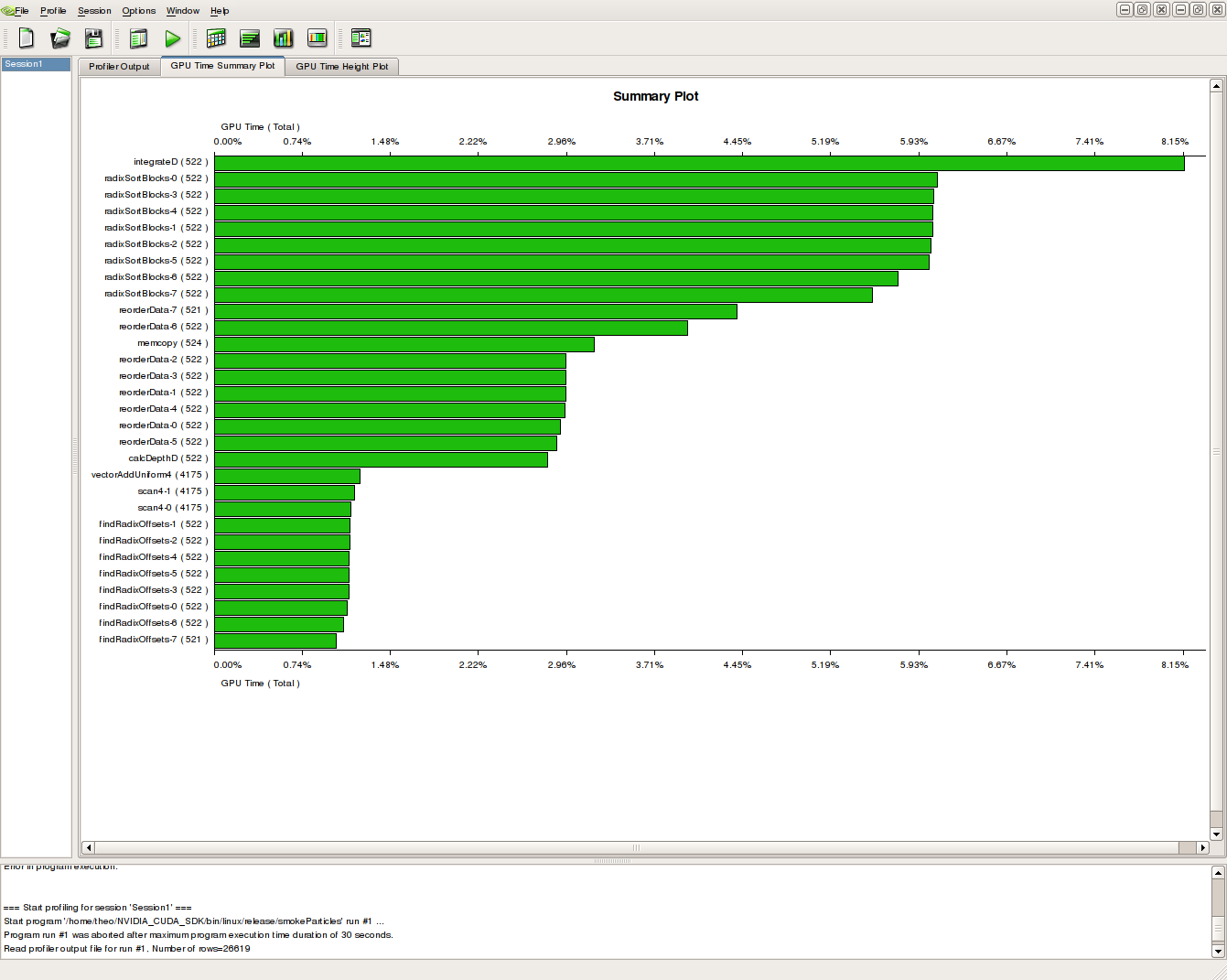
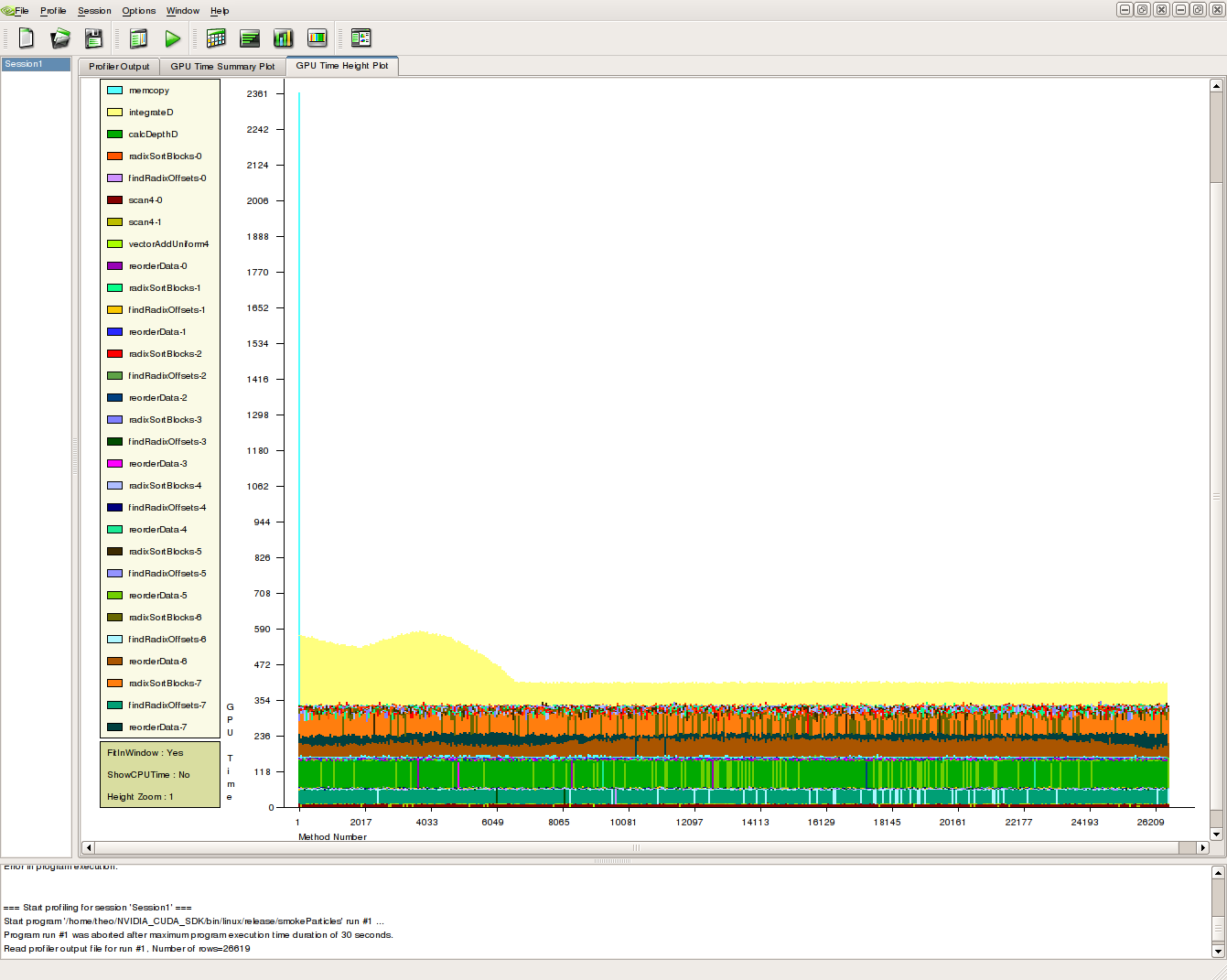
Radio Controlled HD
I got a 25 euro (really, no joke) RC car model from an electronics
store to play with, so that I can put the HD cam on top and make some
nice drive-through shots. With the lid and electronics shield of:
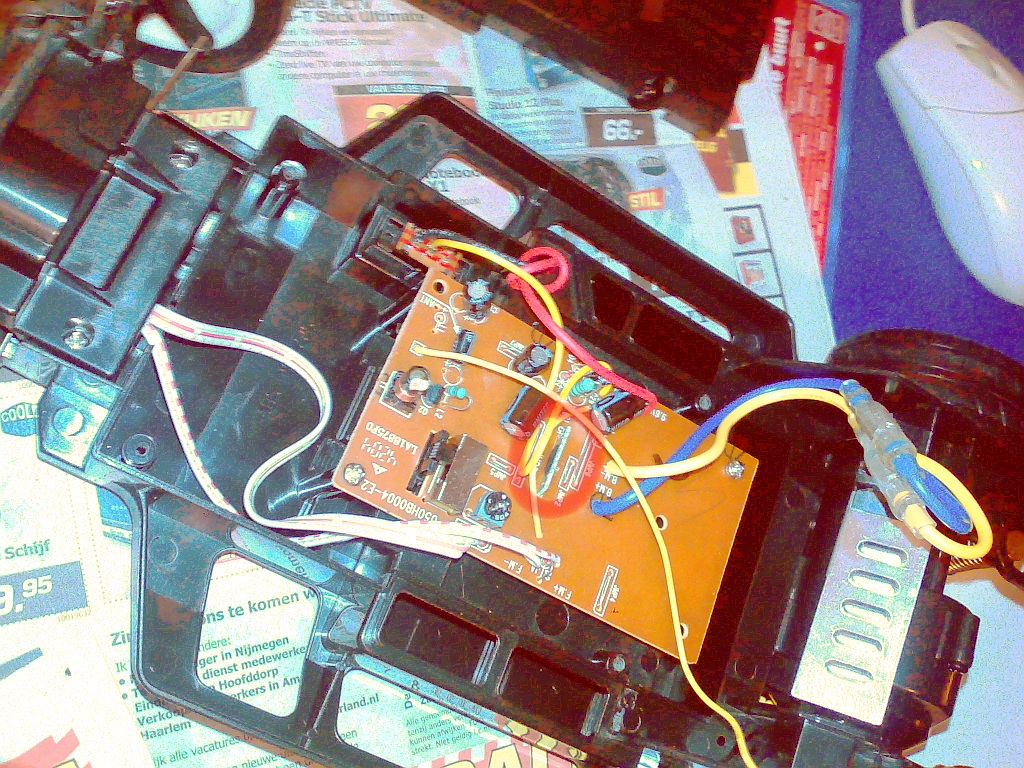
The little PCB with small black blob in the circle in the middle is
probably the control chip, not much electronics needed around it!
The first day the socket transformer seems to have given up, so for the
battery pack (yellow on the right, already worth a part of the 25) I
made an improvised current source charger circuit, with a 50 Watts
transformer (left) a heavy rectifier and Elco, and a current circuit
based on a bike headlight in the source circuit of a power FET (2) with
it's gate controlled by potmeter (1). Charges up to 450 mA into any
voltage between 0 (actually) and about 25 volts, which works good, it
appears, the car runs fine.
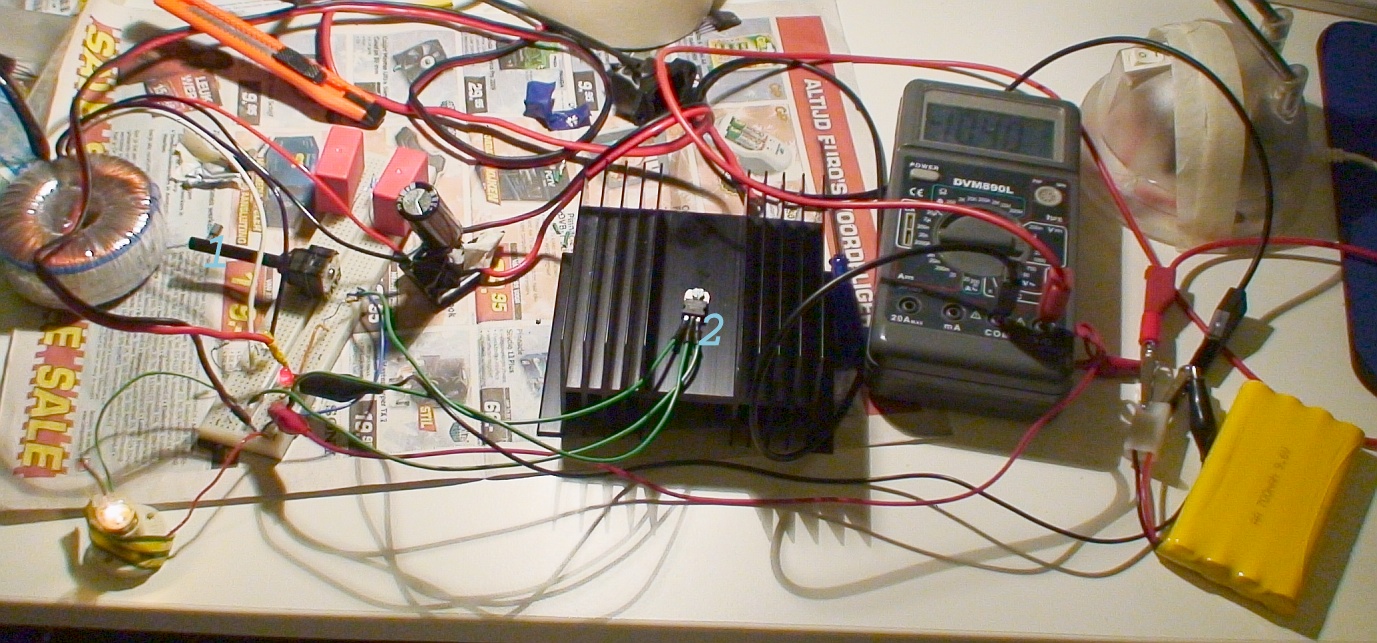
In fact it is quite good, I tried it on blacktop and it can go
quite speed, control is reasonable, and it is fairly well built,
with suspension (but no parallel guided wheel arms) and a differential.
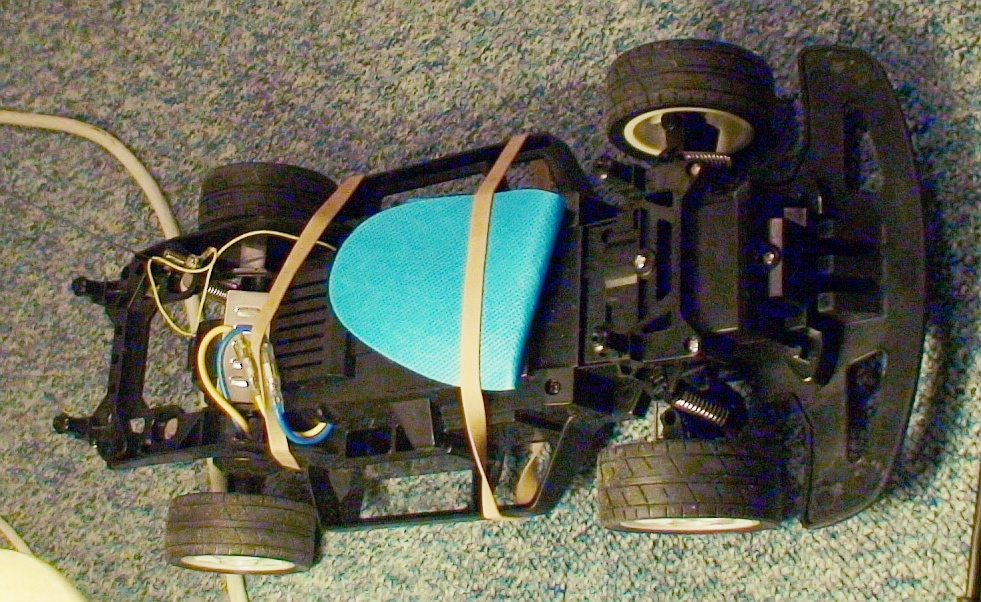
So I fitted the HD camera on top of the soft pad above, kept the
throttle under control and made some film, of which a few small shots
here:
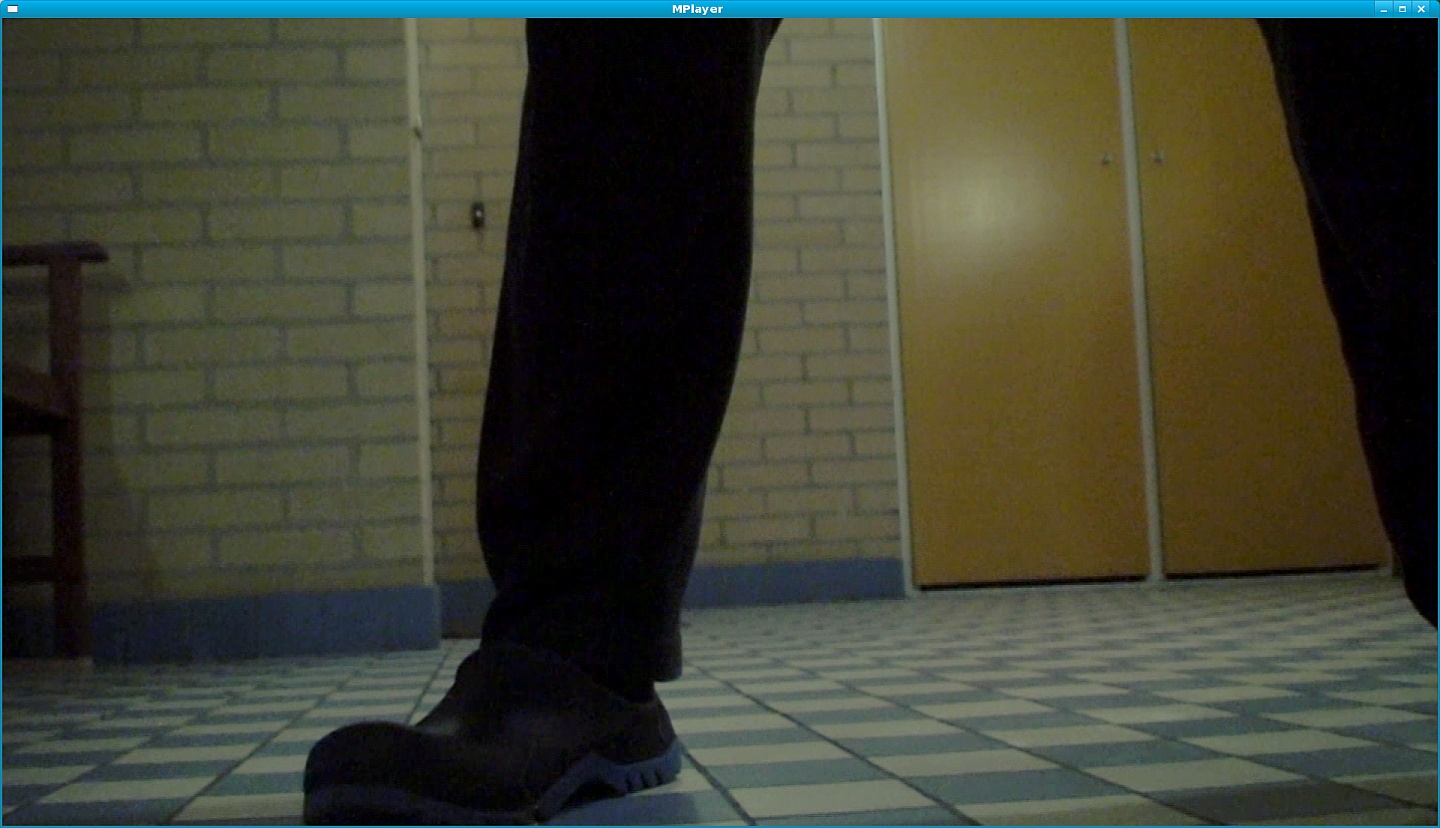
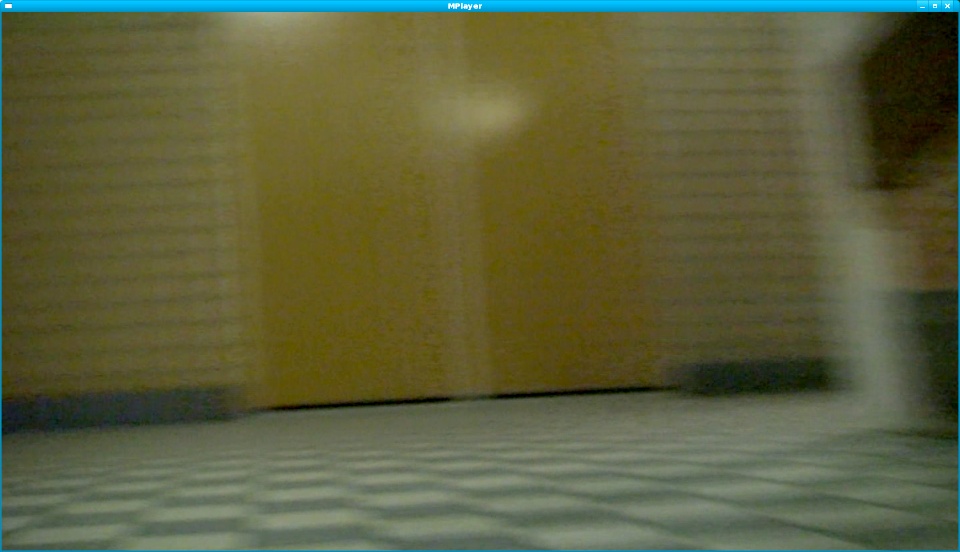
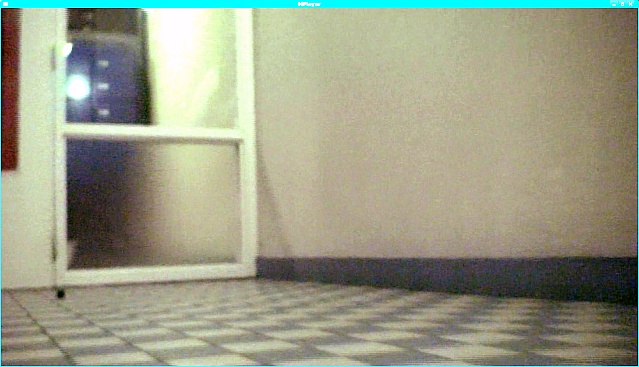
In fact al pictures where in not so light and of course quite in motion
environment!
Household pictures
A big plant, not too expensive, seems to give off oxygen nicely and
makes the corner look more dressed up.
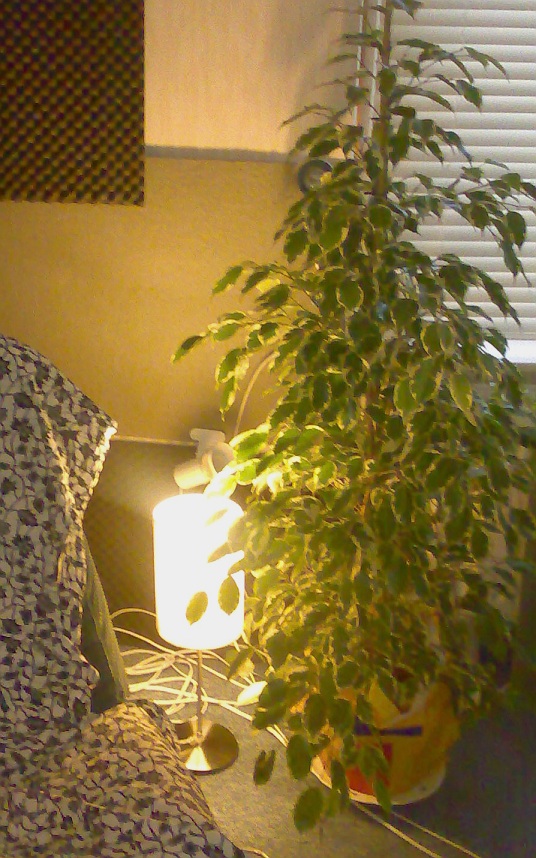
The setup I made the above sounds with:

The pond frozen! Actually it has been frozen for like 10cm or more some
weeks ago.
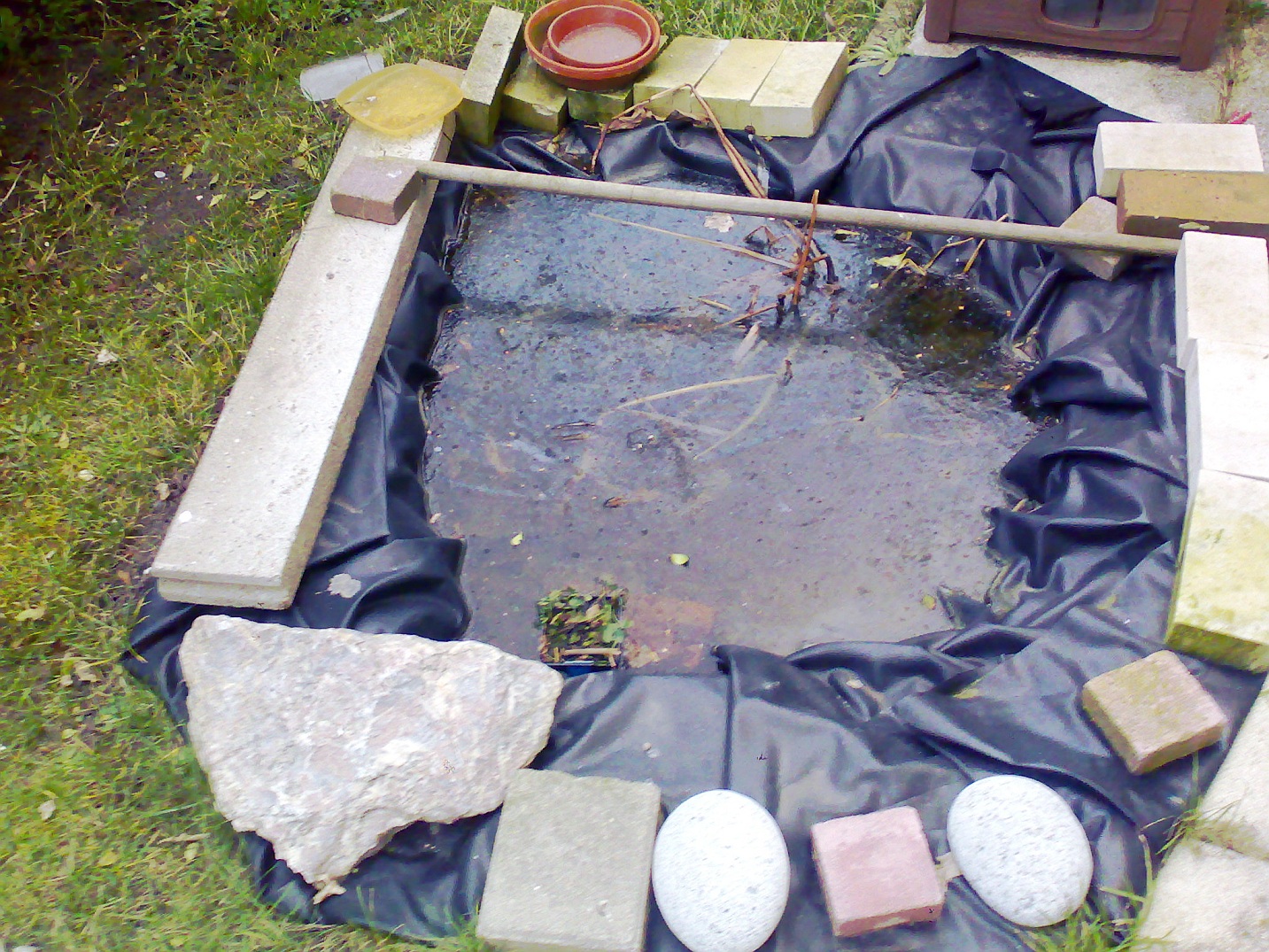
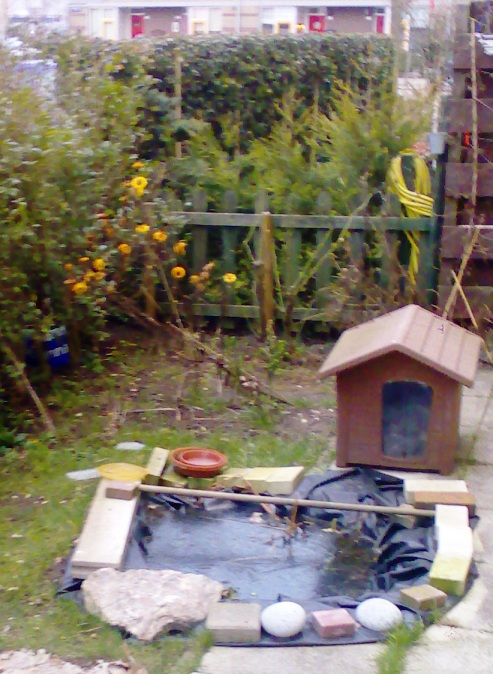
Test pictures:
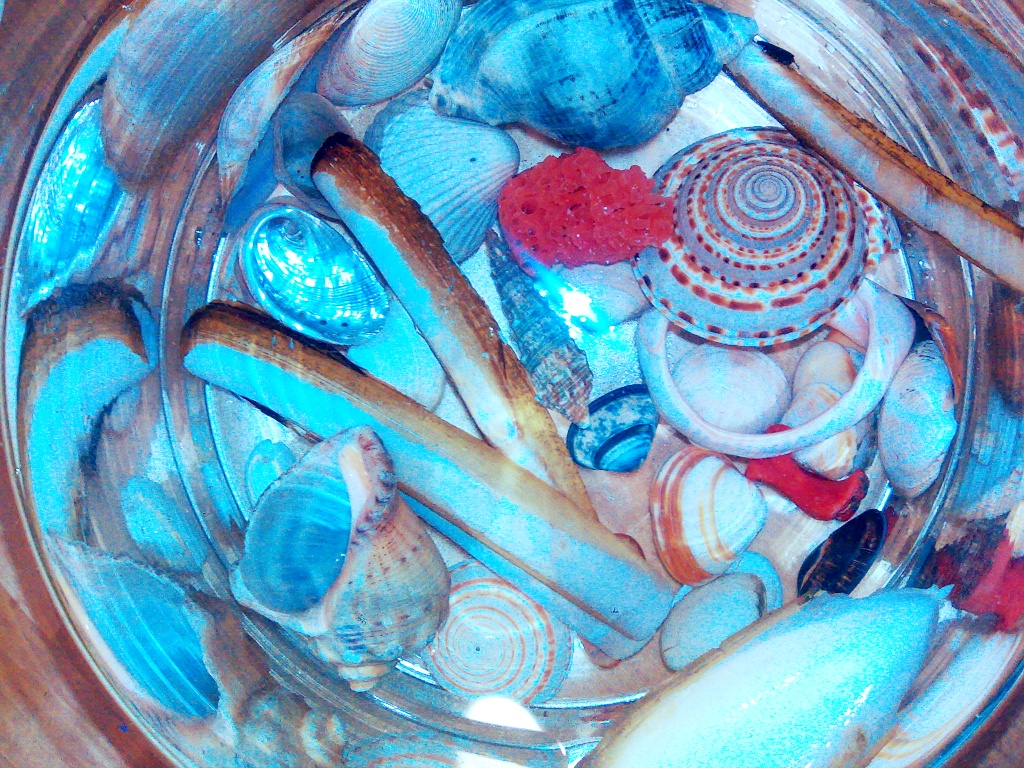
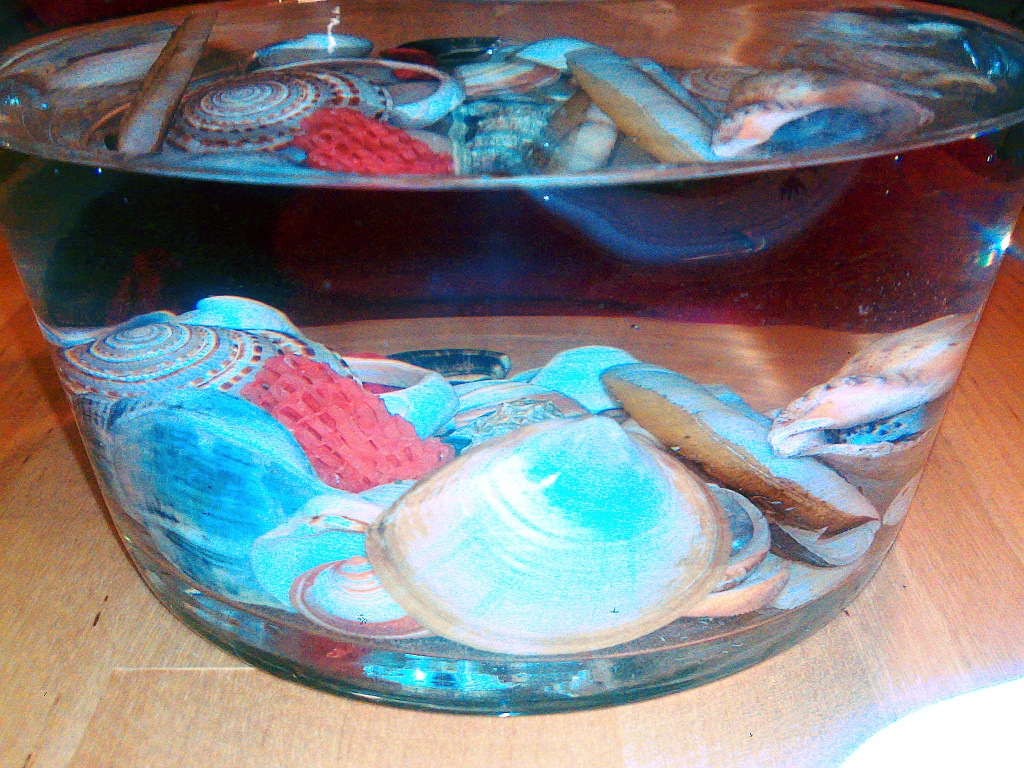
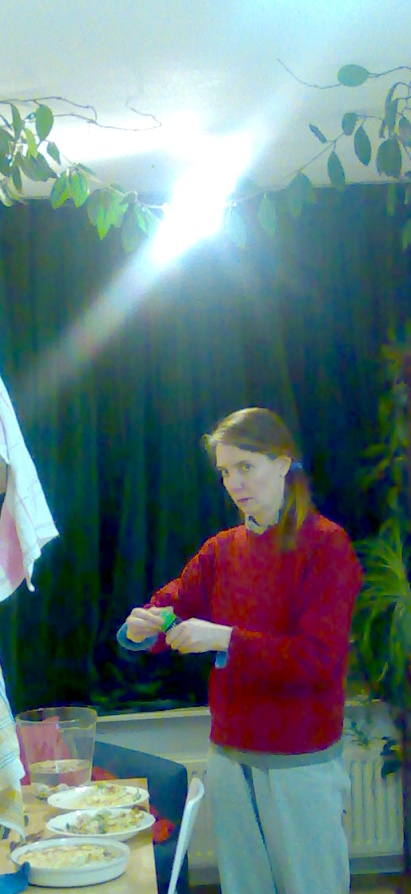
Actually basically a snapshot, but I found the light effect on top
great, that is a fairly expensive 20 Watts (100W equivalent) reflector
saving-light, which as only a few lights do gives a nice bundle and
complexion of light. and the picture shows a nice 70s style TV spot
effect.

















